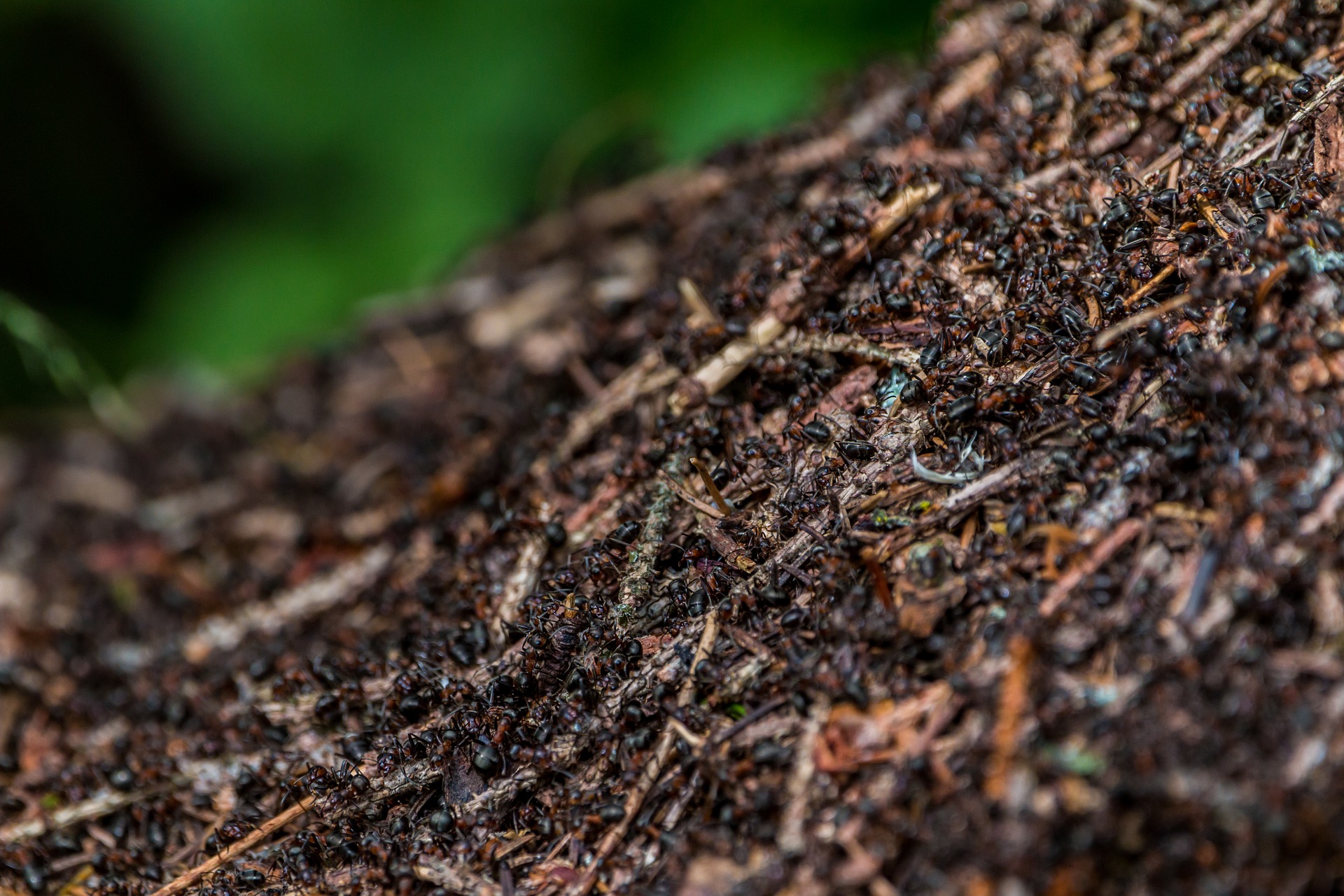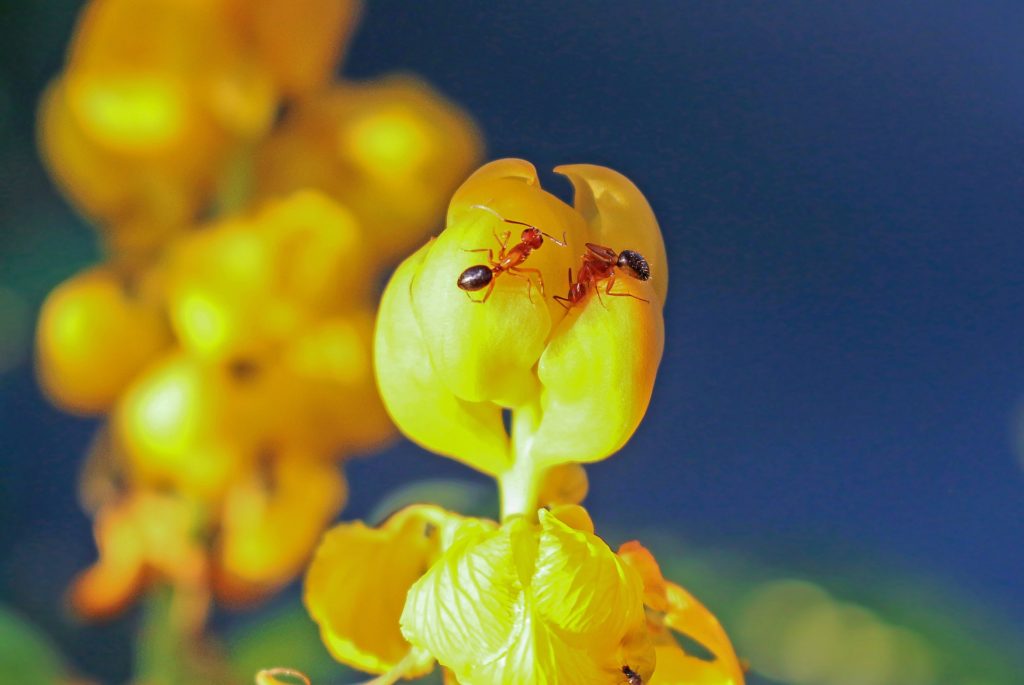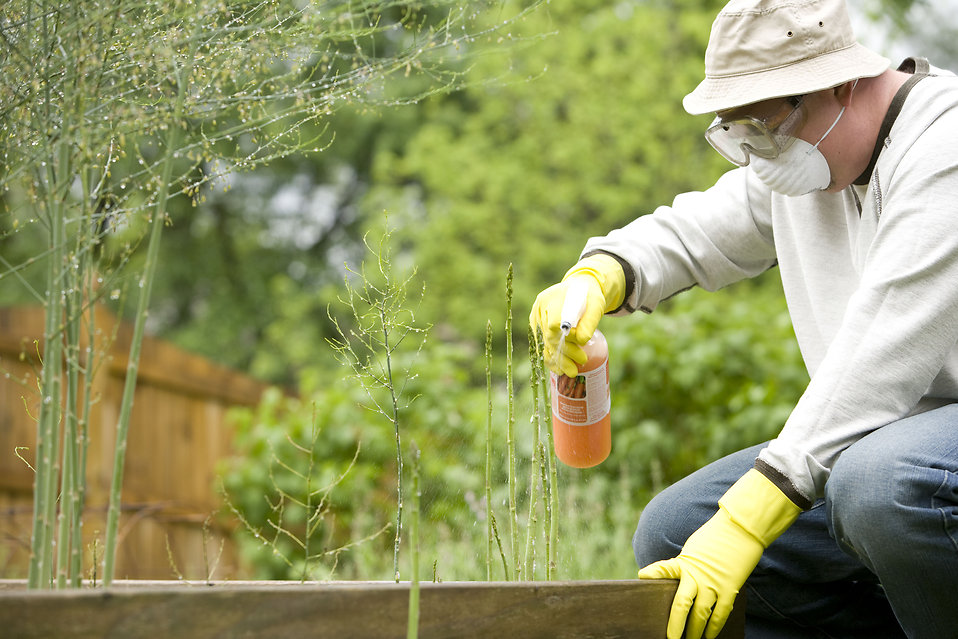
Fighting Fire Ants
Fire Ant Damage
Getting to Know Fire Ants
Do the Texas Two Step
Non-Toxic and Natural Solutions for Fire Ants
Pesticide Solutions for Fire Ants
Fire Ants are the type of pest that can very easily move from being slightly inconvenient to quite costly or even dangerous. Dealing with this invasive species in your own home and yard is serious business if you want to avoid getting bitten. Fortunately, when the going gets tough, gardeners get even tougher! Here’s how to buckle down on fire ants in your area to keep your landscape looking beautiful, keep your home safe, and to keep these pests far, far away.
Fire Ant Damage
The painful bite of these ants is actually a sting but will, regardless, leave you with an instant and intense burning pain for a few moments, followed by an irritated or itchy sting mark for days afterwards – kind of like a burn from a lick of fire (hence the name). However, for some unlucky people, the stings of these ants can have even more severe repercussions. One wayward sting can cue an intense allergic reaction where the person might stop being able to breathe! So, with the stings of these pests ranging from uncomfortable to life-threatening, safety has to come first when dealing with them, but getting them off your property is absolutely vital.
The visible part of the ant’s habitat is in a mound that can rise up to 2’ from the ground, disrupting your landscaping. The real part of their home is actually in expansive tunnels that run under and to the side of the tunnels, sometimes up to 20’ deep and 16’ across! This far-reaching spread of their network makes extermination difficult, as you can’t just attack the visible mound. Plus, their vast tunnels can cause other issues to structures or electrical wiring that they are attracted to. Damage from fire ants isn’t always personal injury, but could also end up costing lots of money to fix

Getting to Know Fire Ants
To get rid of fire ants, you’ll have to get to know them first. The military strategy of “knowing thy enemy” is of good use here.
Fire ants are an invasive species here in the Southern States, where they likely came here in boats and then thrived without any natural predators. They even threaten the established symbiotic relationship that our native ants have that help out other species. Across 12 of the southern states in America, there are both red and black varieties of fire ants, but they both work similarly, so it isn’t worth the risk and effort to investigate what type is wreaking havoc in your home.
There are essentially two types of fire ant colonies that you might face: a single mound or a multiple queen colony.
A single mound is where all of the ants serve a single queen in one colony under one mound. These ones are easier to beat – all it takes it taking out the queen and the whole operation crumbles like a Jenga tower.
A multiple queen colony features worker ants that serve multiple queens across a vast network of many more mounds per acre. With multiple queens across larger areas of tunnels you can’t see, these colonies are much harder to defeat.
Thankfully, there are solutions for either variety that work. Due to the extreme risk of these pests and their tenacious and invasive characteristics, there are limited non-toxic options available, but some pesticides and other solutions that have proven useful.
Remember: if you have any severe allergies to these ants or are ever unsure about using certain chemicals at home, do not hesitate to call a professional to help out with your fire ant problem.

Do the Texas Two Step
And we don’t mean the country and western dance! The Texas Two Step is a method developed by the Texas AgriLife Extension to effectively treat for ants to really gain control and to not just chase mounds around your property. The two steps involved are first applying a bait that they will seek out and feed to their colony, then the second step is to apply individual mound treatments 2 weeks later to any mounds that are still showing activity.
Non-Toxic and Natural Solutions for Fire Ants
The benefit of these solutions is that they’re kid friendly, and for households with animals that would be vulnerable to poisons.
Traditional methods like boiling water and soap aren’t going to work for a problem like fire ants thanks to the expansiveness of their tunnel systems. Instead, try not to disturb the mound at all, and just poison the worker ants.
Come and get it (1st step bait) is a spinosad based bait and is a great option that is safe for your veggie garden and compost pile. Sprinkle it around active mounds or throughout your property, Within minutes, the worker ants will find it and take it to their queen. The mound starts to die off in the first 24hrs of applying.
Nature’s Guide Mound Drench (2nd step mound treatment) The active ingredients are Rosemary oil and wintergreen oil, soil you will get a little aromatherapy while treating mounds

Pesticide Solutions for Fire Ants
Start by spreading fire ant bait around the area of your mound or mounds to start to attack the workers and reduce their population. You can treat trouble areas individually, but you can generally keep the population in-check by treating on warm evenings a few times a year. Read labels carefully to know what your product contains and whether it is safe around people and pets before using.
Extinguish Plus (1st step bait) This bait has a two-way killing action! First it starts to kill off the mound and then it has an insect growth regulator included in the active ingredient that will insure that if the queen gets out alive, she won’t be able to reproduce!! In other words, this product is ant birth control. Another great thing about this product is the coverage rate, 1.5 lbs can treat 1 acre of land.
Nature’s Creation Fire Ant Dust (2nd step Mound treatment) This dust is still safe to use, but is more chemical in its active ingredient list. You would just dust it over any lingering mounds if needed.

Fire ants are an annoyance, an expensive invasive pest that can cause property damage, and a hazard to have around in your home. Not only that, but their mounds are an irritating sore thumb that sticks out in your yard that’s an ugly reminder of the pests underground. You don’t have to tolerate these pests in your home any longer, though – there’s ways to put their invasion to a halt!
